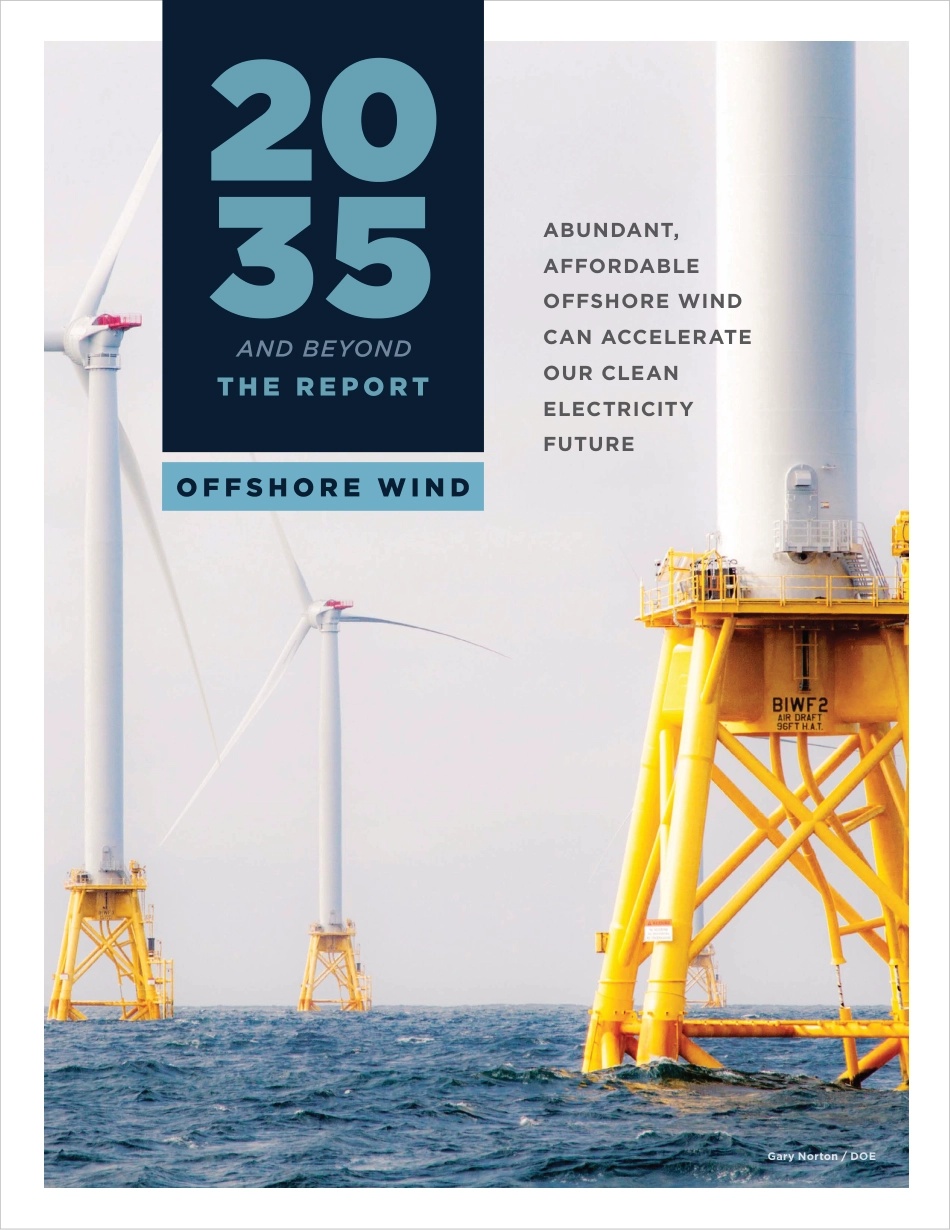ABUNDANT, AFFORDABLE OFFSHORE WIND CAN ACCELERATE OUR CLEAN ELECTRICITY FUTURE Gary Norton / DOEEXECUTIVE SUMMARYPlummeting costs and technical performance improvements of offshore wind have dramatically enhanced the prospects for near-term power sector decarbonization. The high resource quality of offshore wind in the United States, coupled with rapidly falling technology costs, makes it possible for offshore wind to provide 10-25% of total electricity generation in the U.S. power system in 2050 without substantially impacting wholesale electricity costs. This report, 2035 Report 3.0, examines the prospect of achieving 90% clean electricity by 2035 and 95% clean electricity by 2050. Three scenarios — Low, Medium, and High Ambition — detail the electricity system impacts of increased offshore wind growth providing 10-25% of total generation. Global carbon emissions must be halved by 2030 to limit global warming to 1.5 degrees Celsius and avoid the most catastrophic impacts of climate change (UN IPCC, 2023). While the United States continues to make progress on national decarbonization trends, with increases in clean energy produc-tion delivering cuts in power sector emissions, 2022 still saw a slight rise in the nation’s overall greenhouse gas emissions (Rhodium Group, 2023). For the U.S. to achieve net zero emissions, in which the nation emits no more carbon into the atmosphere than can be removed, the U.S. must significant-ly ramp up clean energy production while electrifying other sectors of the economy, such as buildings, transportation, and industry — likely causing U.S. electricity demand to triple by 2050. Dennis Schroeder / NREL2035 3.0 THE REPORT | iAround the globe, nations have begun to grasp ...



